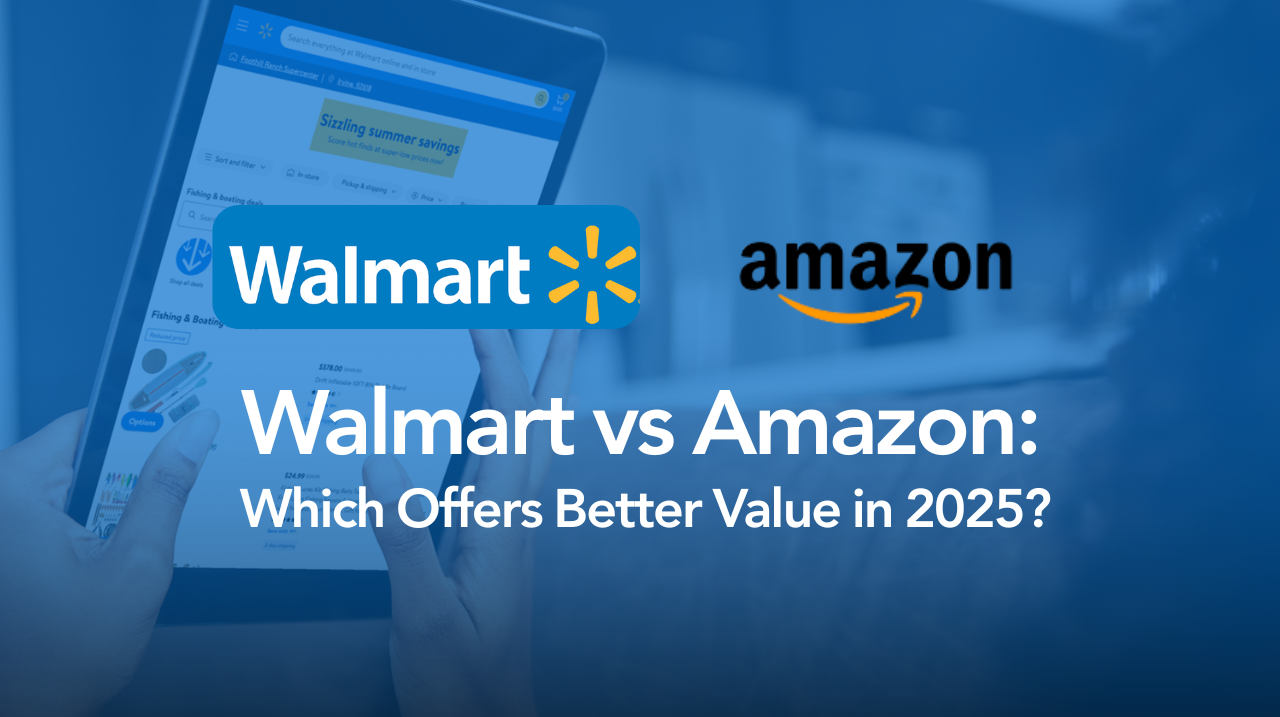Walmart vs Amazon: Which Offers Better Value in 2025?

In 2025, Walmart and Amazon are still vying for your spending, each presenting their own advantages like convenience, competitive prices, and extensive product varieties. Determining who offers the best deals really depends on your shopping habits, what items you need, and the type of shopper you are.
Here’s a detailed comparison to assist you in finding out where you can stretch your budget further this year.
1. Price Comparison: Who Offers Lower Prices?
When it comes to electronics, books, and popular brands, Amazon tends to have the upper hand thanks to its fluctuating prices and regular flash sales. On the other hand, Walmart is typically cheaper for everyday necessities such as groceries, household supplies, and generic-brand products.
Walmart’s Great Value and Equate brands provide significant savings compared to similar items sold by third-party sellers on Amazon.
Basic pantry staples might be more expensive on Amazon unless you utilize the Subscribe & Save option with a Prime account.
Conclusion:
Walmart is usually the go-to for food and household items, while Amazon excels in technology and branded merchandise—especially during special events like Prime Day.
2. Shipping & Convenience
With an Amazon Prime membership, customers enjoy free 1-2 day shipping, access to Prime Video, and exclusive offers.
Walmart+ competes with similar benefits, including free same-day grocery delivery, no minimum for free shipping, and discounts on fuel.
While Amazon remains the leader in quick delivery and product selection, Walmart’s in-store pickup and curbside services offer immediate access—something Amazon cannot match in terms of local convenience.
Conclusion:
Amazon is better for fast shipping, while Walmart is preferable for quick grocery delivery and local pickup.
3. App & User Experience
Both retailers provide robust shopping applications. Amazon’s app stands out for its extensive product offerings and customer ratings. In contrast, Walmart’s app is designed for efficient in-store navigation, price checks, and scheduling pickups.
Conclusion:
Amazon excels in finding products and reading reviews. Walmart’s app is more effective for shopping at the store and grocery-related tasks.
4. Membership Costs
Amazon Prime: $139 per year
Walmart+: $98 per year
If you frequently stream media and shop online, Amazon Prime may provide greater value. However, for those primarily looking to save on groceries and fuel, Walmart+ is a more economical and practical alternative.
Conclusion:
Walmart+ is ideal for families on a budget. Amazon Prime is more suited for avid online shoppers and content streamers.
5. Return Policies & Customer Service
Both services make returns straightforward, but Walmart allows customers to return items at physical stores, which speeds up the process. Amazon provides free return shipping on many products and 24/7 chat support.
Conclusion:
Amazon leads in online return efficiency, while Walmart is best for quick, in-store exchanges.
Final Verdict: It Depends on Your Preferences
Opt for Walmart if your priorities include groceries, in-store pickups, better prices on household items, or avoiding shipping fees.
Go with Amazon if you seek fast delivery, a variety of brands, and streaming options through Prime.
Savvy shoppers often blend the two retailers. By using Walmart for essential items and Amazon for niche products, you can take advantage of both worlds in 2025.
Let me know if you’d like a version optimized for SEO, including comparison charts or affiliate links!
























